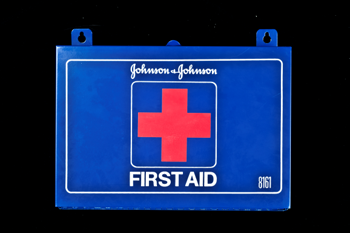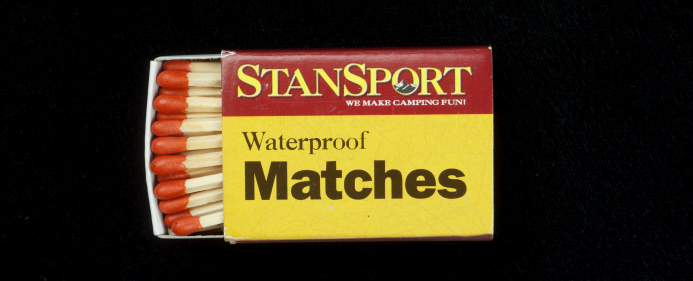To reduce risk during and after an earthquake, citizens should prepare an earthquake disaster kit that includes the following items:
Supply Container
Earthquake emergency supplies should be kept in an easily accessible waterproof container.

First Aid Kit and Prescriptions
In addition to receiving first aid training, each household should create or purchase a first aid kit. This kit should contain enough supplies to treat multiple family members with more than one injury until professional medical attention can be obtained. Be aware that access to emergency responders and medical professionals may be delayed after a natural disaster. Remember to include a three to seven day supply of prescriptions for life-threatening health conditions. Families should decide how best to cycle medications so that expiration dates are not exceeded.
Food and Water
After a natural disaster, water is critical for a variety of reasons. In most situations, a person will be able to survive for only three days without water but much longer without food. It is recommended that an emergency supply kit contain one gallon of water per family member per day for up to seven days. Citizens should not rely on the municipal water supply as loss of services and contamination may occur. Food used in emergency kits should be of a nonperishable nature.
Money and Important Documents
In the event of a major natural disaster, banks and ATMs may not be available. Keep a supply of cash available to use until access to these services can be restored. Important documents such as photocopies of birth certificates, deeds, social security numbers, and a list of account numbers can be helpful during the recovery process.

Weather Gear
Unlike hurricanes, earthquakes do not occur in a particular season but rather at any time without warning. Supply kits must include items to deal with a variety of weather conditions. Tents, blankets, ponchos, waterproof matches, and self-activated warmers should be considered.
Hygiene and Sanitation
Maintaining clean and sanitary conditions are essential after a natural disaster. Toilet paper, sanitary napkins and feminine hygiene supplies, and pre-moistened towelettes are important items to consider.

Communications
Receiving updates after a natural disaster helps to reduce stress and alerts citizens to important announcements. Hand-cranked or solar-powder radios are highly recommended.
Lighting
Flashlights and glow sticks are essential if electrical power is lost for several days. Hand-cranked flashlights are highly recommended.
Tools

Multi-purpose tools can be helpful in a variety of ways after an earthquake, especially when attempting to shut off utility lines or appliances. Make sure this item has functions that include a knife, can opener, and pliers.
Earthquake Disaster Kit Checklist
- First Aid Kit
- 3 to 7 day supply of prescriptions for life-threatening conditions
- 7-day supply of bottled water, with a minimum of 1 gallon a day for each person
- 7-day supply of nonperishable food, such as cans, energy bars, and MRE’s
- Cash
- Photocopies of important documents, such as medical cards, account numbers, insurance policies, and personal identification cards
- Tent
- Blankets and/or sleeping bags
- Ponchos
- Waterproof matches
- Self-activated warmers
- Comfortable, warm clothing and sturdy shoes
- Toilet paper
- Feminine hygiene supplies
- Pre-moistened toilettes
- Hand-crank or solar-powered radio
- Flashlights
- Glow sticks
- Extra batteries
- Whistle
- Multi-purpose tool that includes a knife, can opener, and pliers
- Pet food and pet restraints
- Comfort items, such as games and writing materials
For more information on earthquake preparedness, please contact the Indiana Department of Homeland Security and the American Red Cross.


